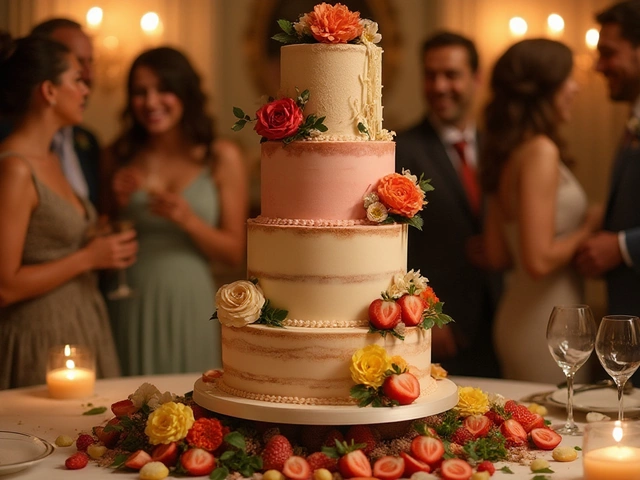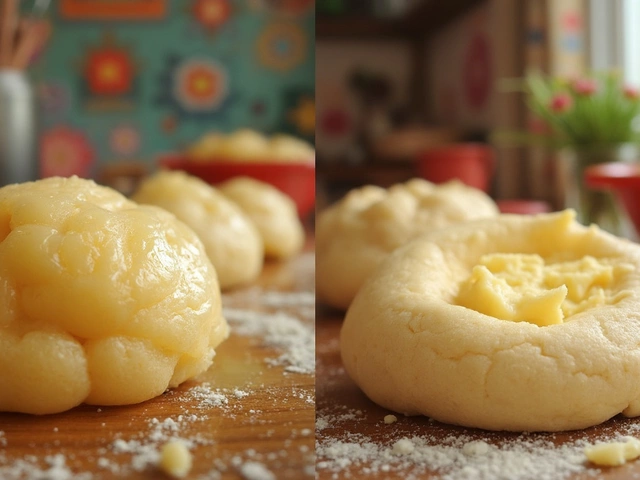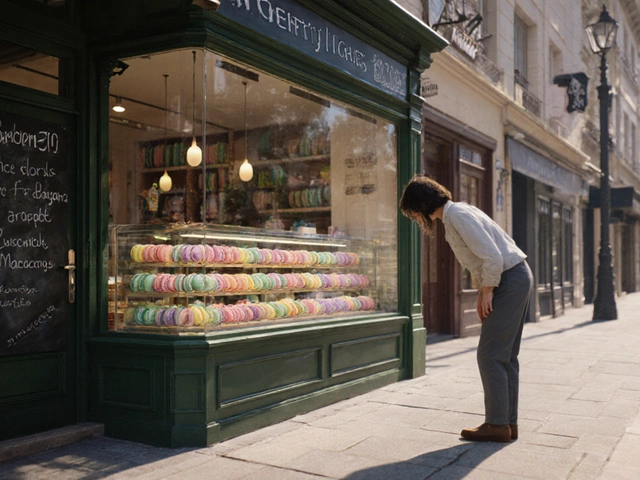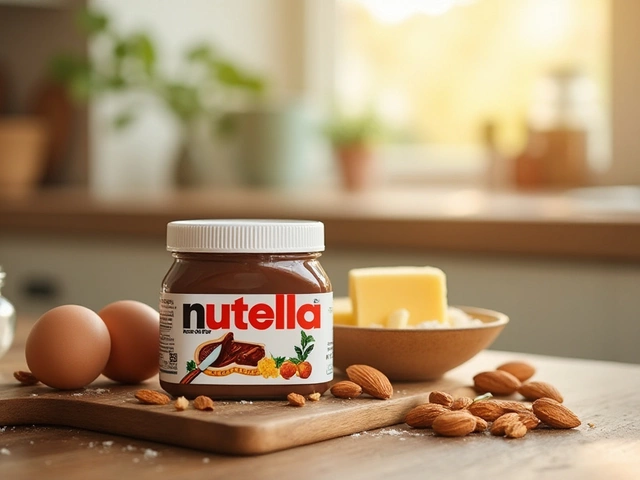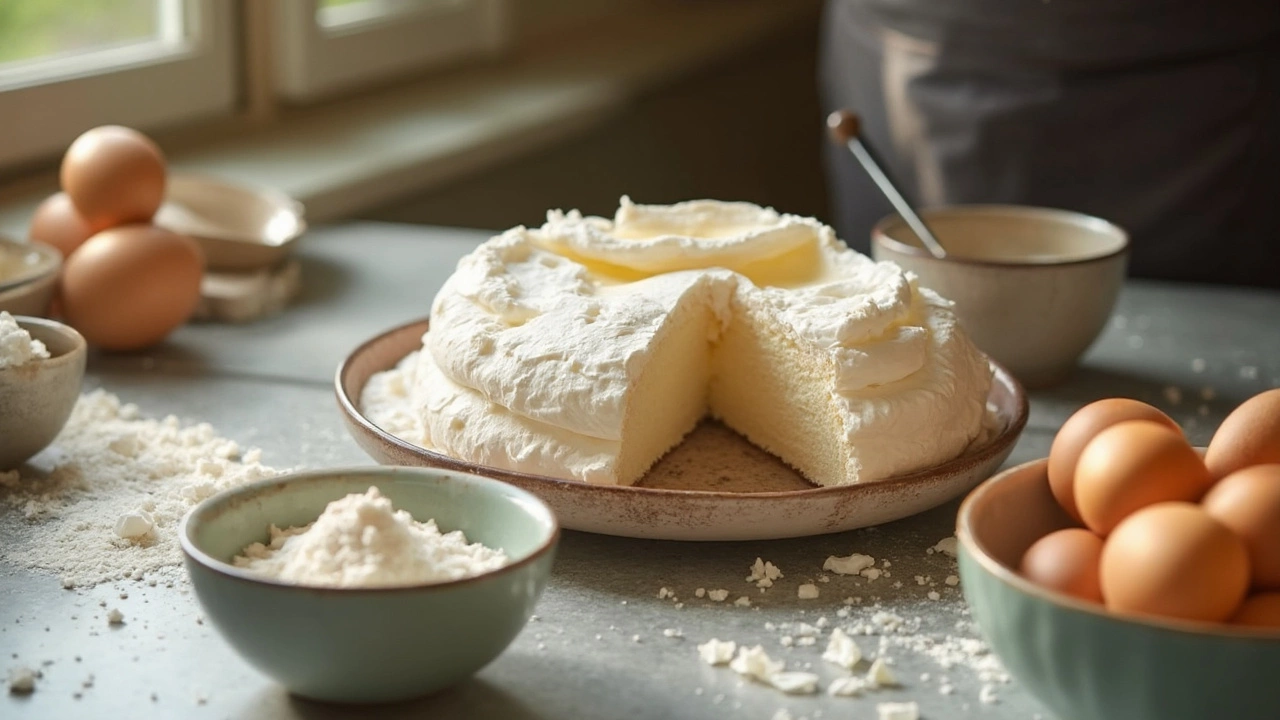
Pavlova disasters usually come down to little science details. That dreamy, crisp-outside and pillowy-inside thing? It’s not magic—it’s the work of two ingredients hiding in almost every legit recipe: cornflour and vinegar. Lots of people shrug them off like they’re optional, but skipping them is where you risk flop territory.
When you add cornflour and vinegar to your egg whites, they change what’s happening on a molecular level, which sounds a lot more complicated than it actually is. Cornflour keeps the center from going chewy or rubbery, and vinegar stops the meringue from collapsing on itself. If you’ve ever ended up with sugary puddles or a pav that deflates as it cools, these helpers might be your answer.
Even if you feel pretty confident separating eggs and whipping up clouds of meringue, nailing that proper marshmallow middle takes one tiny spoonful of science. Most classic recipes use white vinegar and plain old cornstarch for good reason: you’ll get a sturdier shape, a cleaner cut, and way less stress about cracks or leaks. Want to see what happens behind the scenes? Let’s break down why your next pavlova turns out gorgeous, not gummy.
- The Science of Pavlova Texture
- Cornflour: The Secret Behind a Soft Center
- Vinegar’s Marvel: Stability and Lift
- Pro Tips for Pavlova Success
The Science of Pavlova Texture
Pavlova isn’t just a whipped egg white dessert; it’s basically a chemistry experiment you get to eat. What makes it so special? That perfect crunch on the outside with a fluffy, almost gooey middle. Getting both is all about what’s happening inside those stiff peaks.
When you whip egg whites, you’re trapping tiny air bubbles in a web of proteins. Sugar helps stabilize this web, but if you just whip egg whites and sugar and call it a day, you usually get a pavlova that’s either too hard or too weepy underneath. That’s where the pavlova classics—cornflour and vinegar—step up.
Cornflour, or cornstarch, interrupts the protein web just enough to keep the center soft instead of tough. Vinegar adds acid that also shortens those protein chains so the whole thing doesn’t tighten up and squeeze out water (cue that sticky mess at the bottom of your pan).
"Cornstarch and acid are the two secret ingredients that ensure a stable structure and mallowy interior in pavlova." — Australian Women’s Weekly Test Kitchen
Want to see the rough numbers? Here’s what’s usually in a classic pavlova recipe:
| Ingredient | Typical Quantity | Purpose |
|---|---|---|
| Egg whites | 4 | Structure and lift |
| Sugar | 1 cup (225g) | Stabilizes meringue |
| Cornflour/cornstarch | 1 tsp | Keeps center soft |
| Vinegar | 1 tsp | Prevents rubberiness |
Getting the right texture is about balance. Too little sugar and your pavlova will slump. Skip the cornflour or vinegar and it could turn chewy or even collapse. If you’re after those dream pavlova layers, don’t skimp on either.
Cornflour: The Secret Behind a Soft Center
Here’s the real trick to a pavlova that doesn’t go chewy or tough: cornflour. One little spoonful is all it takes to change the entire texture. Cornflour, also called cornstarch in the US, absorbs moisture in your meringue. This stops the sugar and egg whites from forming tough crystals as they bake. Instead of ending up with a thick, nougat-like base, you get a melt-in-your-mouth marshmallow layer hiding under that crunchy shell.
If you take a look at trusted recipes, you’ll notice they use around one tablespoon of cornflour for every four egg whites. Skipping it won’t ruin your pavlova completely, but you’ll get a denser, less airy center that just doesn’t give that wow effect. Even the classic Aussie and Kiwi versions swear by this tiny powder.
What’s actually happening in the oven is that the cornflour interferes with the proteins trying to bond up and get stiff. Instead, it keeps those proteins relaxed, so you get a pavlova that stays thick and soft inside but still slices without collapsing. No strings pulled, just a bit of food science working in your favor.
The most important thing to remember: pavlova gets its texture from this exact step. Don’t eyeball it—measure the cornflour, sift it in, and gently fold so you don’t knock out the air. Want that lovely, fluffy middle every single time? Make cornflour your default move.
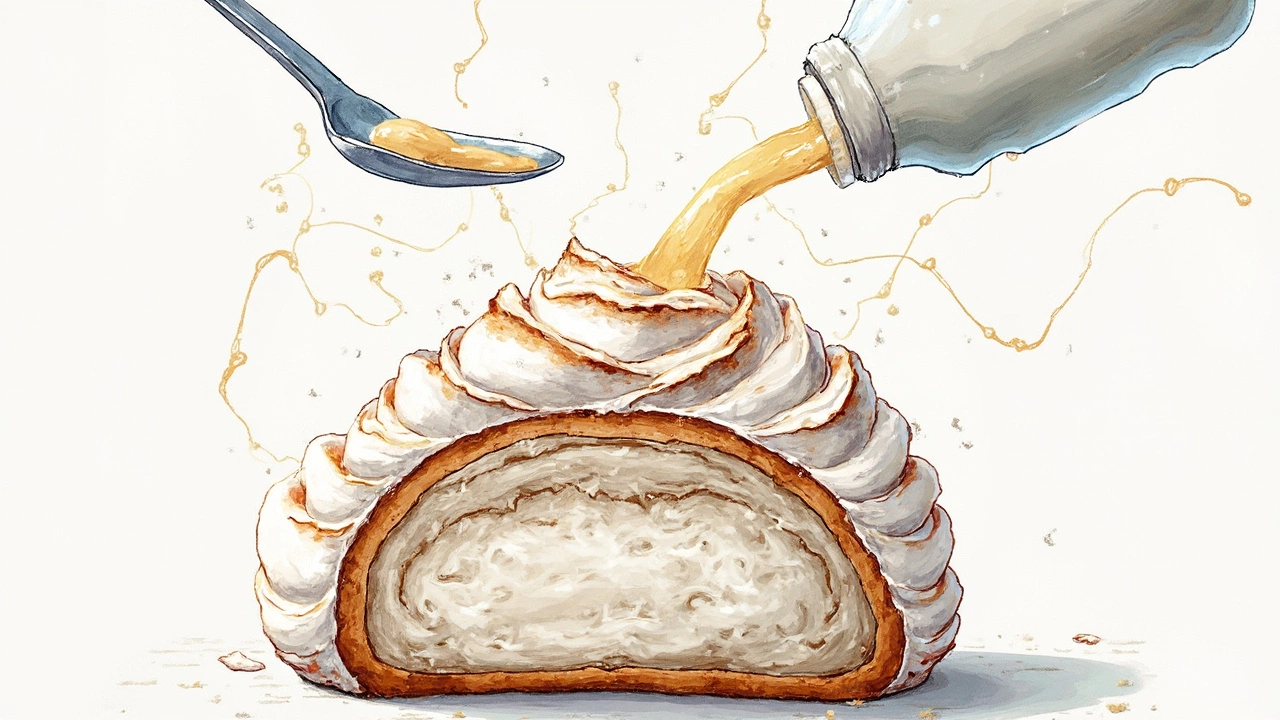
Vinegar’s Marvel: Stability and Lift
Adding vinegar to your pavlova mix isn’t about flavor—it’s about chemistry. When you beat egg whites, you’re whipping air into a protein party. Vinegar, which is acidic, helps those proteins hold their shape and keep that marshmallowy fluff inside, instead of collapsing into a flat sugary mat.
How does it work? Egg whites by themselves are kind of finicky. As you whip them, their proteins unfold and link up, trapping air. But this net can break easily. A dash of vinegar lowers the pH, making those proteins more stable and elastic, so your pavlova doesn’t deflate or crack as it bakes.
There’s a sweet spot, though. Too much vinegar and your pavlova can taste tangy or not set right. Most recipes call for about half to one teaspoon per four egg whites, which is enough to do the job without messing with taste or texture.
- If you run out of regular white vinegar, you can use lemon juice. It works almost the same, but adds a faint citrus note.
- Using apple cider vinegar is okay in a pinch, but it has a stronger taste—stick with plain if you can.
Here’s a quick look at what vinegar brings to the table compared to going without:
| With Vinegar | Without Vinegar |
|---|---|
| Stable, higher rise | Flat, deflated |
| Smooth outside, marshmallow center | More cracks, chewy or collapsed |
| Keeps shape while cooling | Likely to shrink |
If your pavlova ever turns into a pancake, vinegar could be the fix you didn’t know you needed. It’s a tiny step with a big payoff in both looks and texture.
Pro Tips for Pavlova Success
If you want your pavlova to look and taste epic every time, it pays to follow some nitty-gritty tips that even home bakers miss. The little stuff, like how you prep your mixing bowl and what the weather's like, actually makes a difference.
- Start with super clean equipment: Any trace of grease, even a fingerprint on your bowl or beater, will mess with how high your egg whites whip. Wipe them down with a bit of vinegar beforehand to be extra sure.
- Separate your eggs while they're cold for fewer broken yolks, but let the whites sit until they're room temp before whipping. Warmer egg whites whip up fluffier and hold air better.
- Don’t rush the sugar. Add just a spoonful at a time once the egg whites look foamy. If you dump it in, you’ll deflate everything and the *pavlova* could end up weepy.
- Add the cornflour and vinegar right at the end, just after you've achieved stiff peaks but before over-mixing. This combo keeps your center marshmallowy and stops cracks.
- Bake low and slow. Cramming the oven full or using convection can create hot spots that dry out or brown the meringue too much. If your oven runs hot, go 5°C (about 10°F) lower.
- Cool in the oven with the door cracked open. Rushing it by pulling it out fast or moving your meringue straight to the counter is a one-way ticket to collapse.
If you’re curious about how different tweaks affect the end result, check out this handy comparison:
| Technique | With Cornflour and Vinegar | Without Cornflour and Vinegar |
|---|---|---|
| Texture | Crispy shell, fluffy center | Fragile shell, chewy or rubbery inside |
| Shape | Holds form well, minimal cracking | Prone to sinking, large cracks |
| Slicing | Clean slices, minimal sticking | Center can stick and collapse |
One last tip: Only top your pavlova right before serving. The cream and fruit look great on Instagram but start softening the *pavlova* within an hour or two—especially important if you're hoping for leftovers. Trust me, a couple minutes of patience keeps that shell snappy and the center dreamy. If you’re hunting for that signature pavlova magic, don’t overlook a proper pavlova method—you’ll see (and taste) the difference!

